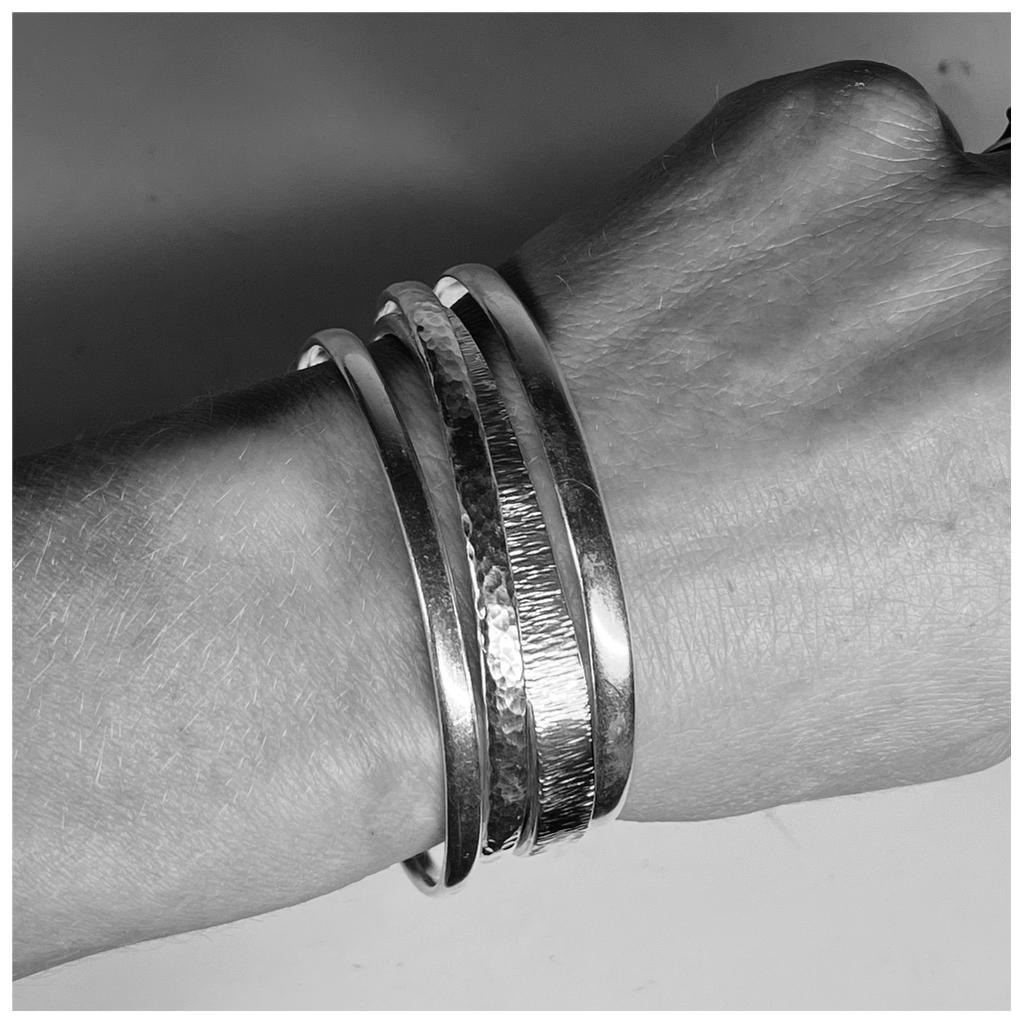Recycled Precious Metals? Eco Silver? What are they and why should we use them?

What are Precious Metals?
Firstly, let’s look at what a precious metal is. At its most basic, precious metals are rare and command a higher economic value than other metals.
In addition, they are less reactive than other metals, therefore they don’t rust or corrode, meaning they retain their value for longer.
There are currently 8 recognised precious metals (although this list can differ between countries, markets and over time):
- Gold
- Iridium
- Osmium
- Palladium
- Platinum
- Rhodium
- Ruthenium
- Silver
All of the above are used in a variety of ways: economic trading; additions to alloys for strength, durability or resistance to corrosion; use in the automotive industry and even in medicine.
And of course, some are used within arts and jewellery making!
What are Recycled Precious Metals?
When jewellers talk about ‘recycled’ metals, this means they are using metals which have been used previously in a different product. The metal hasn’t been mined and sold straight to them as a first time use commodity – it has to have been used previously and have gone through a refining process in order for it to be re-used.
Silver for example is used in many products other than in jewellery. It is used in x-rays, cameras, and phones. It is collected from these items (and of course unwanted jewellery), melted down and recast into new products including sheet, wire and grain.
Why Should we use Precious Metals?
Silver is removed from the ground through mining, this still happens across the world today, but it is mainly in Africa, Asia and South America. Although only 18% of the world’s silver is recycled!
The process releases lots of CO2 into the atmosphere and can be damaging to the planet, it can also damage environments and biodiversity in areas local to which it is mined.
In addition it can also be difficult to qualify the working conditions of those employed in each mine and so the safest and greenest way of purchasing gold and silver, is to only buy recycled.
There is no difference in quality between newly mined silver or gold and recycled silver or gold, it is non-ferrous, which means it does not lose any purity when melted down and reused. All of it needs to go through the same high standard of quality testing before it can be sold on the open market.
How can we Trust that we are Buying Recycled Silver or Gold Jewellery?
As jewellers we can choose to buy our precious metals from a range of different suppliers, many will offer 100% recycled silver and gold. Many of these suppliers will have their own certification scheme to prove that the metals they are selling are 100% recycled.
As a jeweller, it is very difficult to provide evidence to customers that you are using metal that is recycled. There is no accreditation for smaller businesses to prove origin or quantity of metal that is recycled.
The best we can do is purchase from trusted industry suppliers and ask about where they source their silver, how they accredit it and ask them for any audit or accreditation certification.
All of the silver I purchase for Fred & Emily is either 100% recycled or 95% recycled and 5% Eco silver (see Fairtrade and Fairmined below). These Bangles and Pebble Earrings for example are 100% recycled silver.
Fairtrade and Fairmined
In addition to recycled metals, it is worth mentioning that as consumers, we can also buy Fairtrade and Fairmined precious metals.
These are two accreditation schemes that support smaller artisanal mines across the globe to ensure that working conditions are safe, that local communities are protected and supported, that ensure completed mines are restored to original natural conditions and make sure that those working in these mines are paid fairly. There are over 100 million people globally supported by working in this sector.
